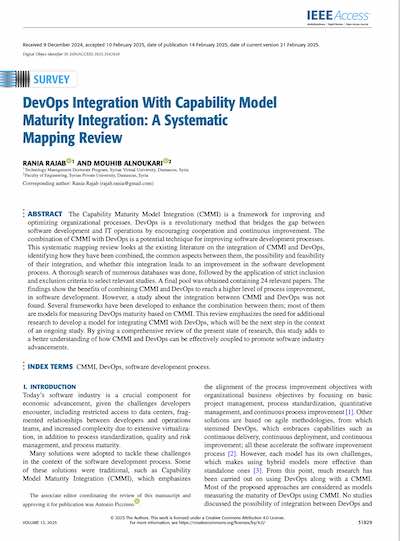Today's article comes from the IEEE Access journal. The authors are Rajab et al., from Syrian Virtual University. In this paper the authors explore how DevOps teams are attempting to embrace the Capability Maturity Model.
DOI: 10.1109/ACCESS.2025.3542630


You must be an active Journal Club member to access this content. If you're already a member, click the blue button to login. If you're not a member yet, click the sign-up button to get started.
Login to My Account
Sign Up